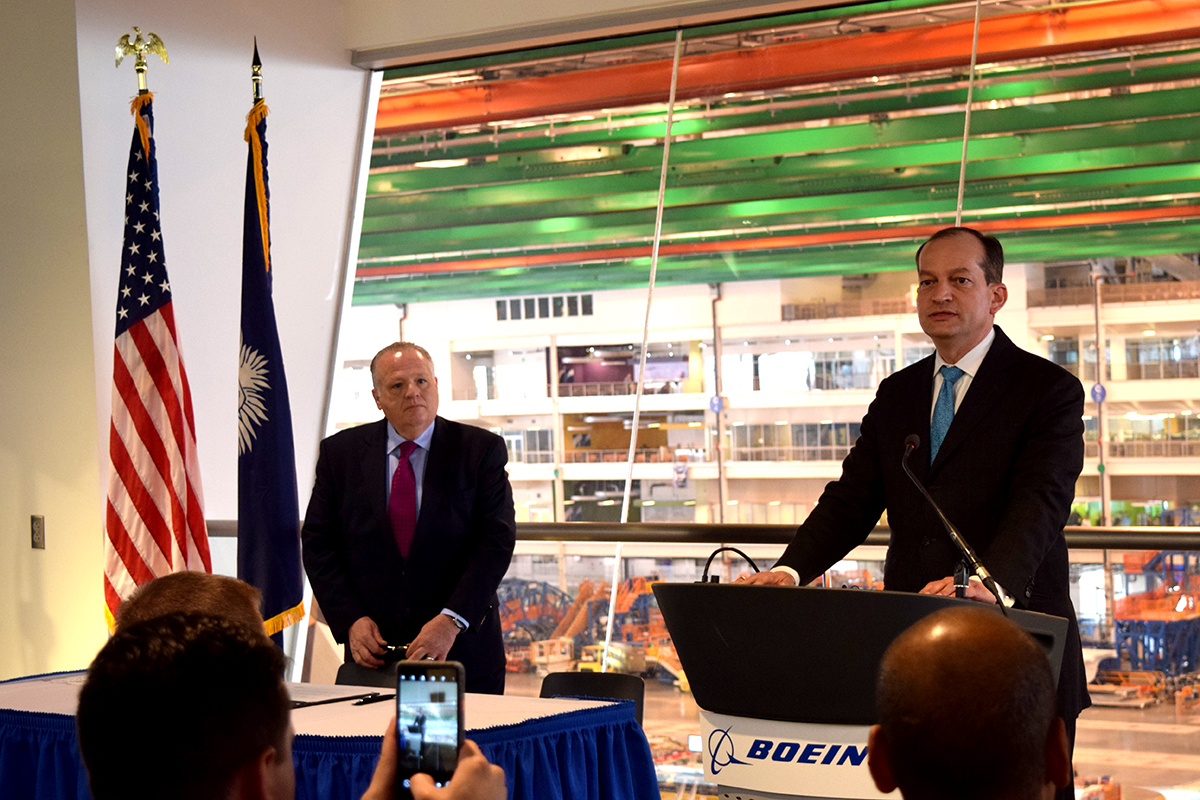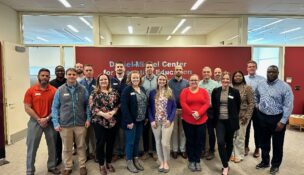Boeing invests $100 million in workforce development
Staff //July 23, 2018//
 Boeing Co. announced Friday it will create 100,000 new career opportunities for current and future employees over the next five years and convert some of its paid internships to apprenticeships, investing a total of $100 million in training and workforce development programs.
Boeing Co. announced Friday it will create 100,000 new career opportunities for current and future employees over the next five years and convert some of its paid internships to apprenticeships, investing a total of $100 million in training and workforce development programs.
The announcement was in conjunction with a visit to Boeing South Carolina from Secretary of Labor Alexander Acosta, who was there to tout the National Council for the American Worker, a new council created by President Donald J. Trump on Thursday and focused on creating a national workforce development strategy.
“We applaud the efforts to expand and increase the efficacy of the workforce development programs in the United States,” said Tim Keating, executive vice president for government operations. “Boeing is truly proud to have signed the pledge to American workers yesterday.”
Acosta and Keating held a commemorative signing of the pledge during Acosta’s tour of the Boeing facility.
Keating said Boeing saved $300 million because of the tax overhaul Congress passed at the end of 2017, and the company is investing one-third of that into job and skills training for its workforce.
“These opportunities will come from a combination of continued education, reskilling, on-the-job training and other workforce development programs,” Keating said.
Acosta said America is at a crossroads, with unemployment low and more jobs available than jobseekers nationwide, and commitments like Boeing’s are critical to making sure the United States has a workforce with the right skills for the jobs available.
He added that job training programs can also help reduce the disparity of unemployment rates between high growth areas like Charleston County, where the unemployment rate is 3%, and struggling areas like Bamberg County, where the unemployment rate is 6.5%.
“We need to invest in the skills that are being demanded, and if they do that, there are great opportunities out there,” Acosta said. “But institutions need to work with business to teach what is being demanded — advanced manufacturing, health care, there’s so many opportunities. Education needs to de-silo and recognize that … lifelong learning is important, but you also need to teach the skills so that people, when they graduate, will have jobs.”
Manufacturing facilities across South Carolina and across the country, he said, are not the factories of yesterday, and the education system and job training programs need to catch up for both young people entering the job market and for mid-career individuals looking to change tracks.
“The commitment that Boeing and others are making is not just to work with community colleges and others to provide educational opportunities to Americans, but also to work with individuals who are in the middle of their careers to make sure that those individuals maintain their skills up-to-date,” Acosta said.
The country also needs to work on increasing labor participation, he said, which was 62.9% in June. The rate has remained largely unchanged since the end of 2013, according to the Bureau of Labor Statistics.
“We need to find ways to increase that labor force participation rate, and … there are a number of issues,” Acosta said. “It’s a complex question.”
One potential solution, he said, are programs that help integrate former inmates into the workforce, and the Department of Labor is offering several grants to help support these programs.
“As a (former) prosecutor, I also strongly believe that once someone has served their time, the best that you can do to help them, the best that you can do to help society by reducing recidivism and the best that you can do for our economy is to work with them so that they can find jobs,” he said.
Acosta also said the U.S. opioid crisis is having an adverse effect on bringing people back into the labor market — according to a study by the Brookings Institution, 44% of men and 35% of women out of the labor force said they’d taken a pain medication in the last 24 hours, more than double the percentage of employed men and 9% more than employed women.
The Department of Labor, Acosta added, is working with treatment centers to help people in recovery receive job training.
“Companies often think of investment as building facilities and infrastructure, but the individuals that work at a company that produce the planes and the goods are the ones that make the products that get sold,” Acosta said. “Companies that thrive are companies that invest in their people, in their workforce.”
C

















